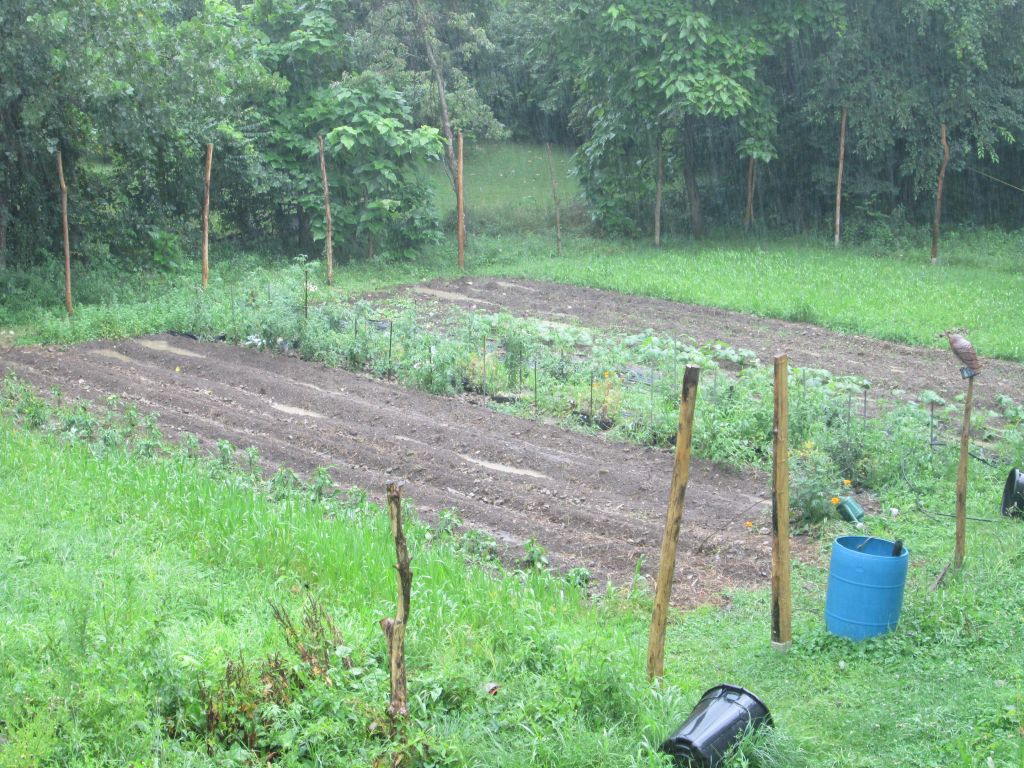Today is a gorgeous day, perfect for planting, but I took time to come home and watch my son so my wife, Mayda Sanchez, Secretary of the Farmers’ Market Management Network, Inc., could attend a meeting. The meeting (that she missed due to some scheduling confusion) was about a planned study of farmers’ market food safety. It’s being done through OSU in collaboration with the Columbus and Franklin County health departments.
From what I understand, they plan to look for pathogens in samples taken from farmers’ fields both before harvest and either at the time of harvest or immediately afterward (I’m not sure which). They also plan to take samples after the produce has been out on display at a farmers’ market, where it will have been handled by customers.
As a farmers’ market vendor, I’m opposed to this study. Why? Have I got something to hide? Am I afraid that all the dirty little secrets of sustainable agriculture will be discovered and the whole concept of “clean food” exposed as a sham? Not at all.
What I’m opposed to is the narrow focus of this study. I have no doubt at all that tomatoes that have been fondled by prospective customers for three hours are going to have some level of some kind of dangerous pathogen on them. No question. It further stands to reason that tomatoes that have been sitting out for three or four days at a large grocery store that’s open 24/7 are going to have tremendously higher counts of dangerous pathogens…but the proposed study won’t be looking at these tomatoes.
See the problem? Germs are everywhere. They’re unavoidable in the natural world. That’s why we have immune systems. Vegetables–at least any other than hydroponic ones–grow in dirt. Dirt is–you guessed it–dirty! The outdoor fields where the tomatoes are grown, exposed to flying birds and other wildlife, undoubtedly carry traces of germs, which is why the smart money is on washing your food before you eat it. This is true, though, of food grown outdoors whether it’s sold at a farmers’ market or at a big chain grocery store.
If we take two samples side by side, we can say, “Both samples show the presence of Superbug X, but Sample A has 6,000 times more Superbug X on it than Sample B does.” Reading that sentence, you would probably come to the conclusion that you would prefer Sample B. If, however, the result is just “We tested a sample from Jones’ Fruit Farm, and it contained Superbug X,” no doubt Farmer Jones is going to see business dry up fast. His customers will run from his stand to whatever store happens to be selling the food that is 6,000 times filthier, because that danger wasn’t reported. There is no absolute safety, only relative safety. If you don’t make a fair comparison, anything examined in isolation is going to seem dangerous.
I would welcome such a study if it were broadened to include conventionally grown food sold in stores. If the study shows that my carrots are germier than Wal-Mart’s carrots, so be it. It may hurt my interests, but at least it’s a fair accounting.
I trust that the folks behind this study have the most principled of intentions in doing the study. They no doubt want the public to be safe. They see farmers’ markets growing, and like anyone suspicious of something new and unconventional, they feel it necessary to verify the safety of the food sold at these markets. That’s fine if the study is being done in such a way as to include like samples of non-farmers’-market-food to offer some context. Otherwise, regardless of the sincere intentions of the creators of the study, it has the potential for being used as a hit piece by purveyors of industrial food seeking to undermine the competition.
That may sound a little “tinfoily” to some, but we’ve already seen Big Dairy sue to force farmers who don’t juice up their cows with hormones
to label their milk with a disclaimer saying that milk from normal, healthy cows is no better for you than milk from cows on drugs. Just today I read a story about Monsanto suing Germany for banning a genetically modified kind of corn that was the cause of some health concerns. If a corporation will do massive damage to the environment and sell people poisons while calling it food, there’s little reason to expect them to play nicely and tolerate competition from a bunch of little farmers selling homegrown goods. I don’t want to give these guys any ammunition, and a study that will undoubtedly conclude that local food is dirty (without also saying that shipped-in food is tremendously dirtier) would do exactly that.



One thought on “Farmers’ Markets Under the Microscope”
It’s a scary thing to know that large companies are going to continue going after small business owners, especially in the food industry, where safety regulation has been an excuse for turning what used to be flavorful, locally grown, artisanal food into the “edible food-like substances” Michasel Pollan and others have been decrying. I applaud your blog post and you for growing good food and for communicating the risk to small farmers and consumers everywhere.